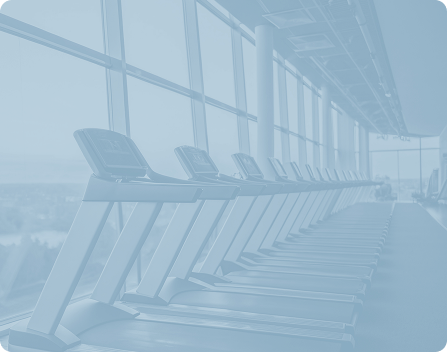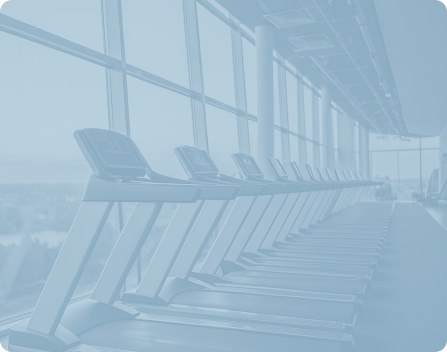
faux fitness
Contrary to what we think we know, have learned, or have been told, Faux Fitness is a user’s manual for how our bodies really work.
With facts, a touch of science, and a dash of humor, Faux Fitness presents a compelling picture of what health, fitness, and well-being truly are.

To breathe or not to breathe
People love running, whether it be for sport, exercise (weight loss), fresh air, the rush of endorphins, or the energy that comes from it. Regardless of which group you find yourself in, you might want to sit down for this next part….
About all this Breathing
First, we need to be clear on the terms “aerobic” and “anaerobic.” We might think we understand them already. They have to do with breathing, right? Aerobic means with oxygen; anaerobic means without oxygen. Most people think that when we’re breathing heavily, it’s aerobic. We’re breathing more air, and the more air we take in, the better. But it’s not about how much we’re breathing or about how much oxygen we’re taking in. It’s about how much our bodies, our muscle cells, are breathing. In truth, aerobic and anaerobic simply describe the two ways our bodies produce energy.
“Oxidative stress” is the term for what most of us know as “cardio”—maintaining an elevated heart rate for an extended period of time, so we can lose weight and stay in shape.
In an aerobic state, when our heart rate is below 120 beats per minute (on average), our body delivers air to our muscle cells in order to burn fat as fuel. The by-product of this is sweat or water. In an anaerobic state, when our heart rate is above 120 beats per minute, our body isn’t getting enough oxygen to our muscle cells, so we begin burning glycogen in a process called glycolysis. All those sugars and carbs we eat turn into glycogen and can be stored in the muscles and liver as fuel. This is when we are in oxidative stress—our bodies are under stress because our muscle cells are not getting enough oxygen. And with glycolysis, the by-product is lactic acid.
When lactic acid builds up in our muscles and circulatory system, it can reach a toxic level that could potentially kill us. So, we start breathing more heavily because the added oxygen helps us to process the lactic acid. The lactic acid is recycled via the liver to be turned back into glycogen.
When we’re breathing heavily, the vast majority of that air is being used to process the lactic acid. Very little is getting to our muscle cells. So, heavy breathing isn’t aerobic at all. We are actually in an anaerobic state. In fact, that whole exercise craze we call “aerobics” isn’t actually aerobic. Neither is running, cycling, or any other activity that keeps the heart rate elevated for an extended period of time.
Not So Much About Breathing
As mammals, we obviously need to breathe. Breathing is essential. It’s so essential to our health and well-being that we do it without having to think about it. It makes sense, then, to perform exercise in such a way that it promotes aerobic activity, which allows our bodies, our muscle cells, to breathe.
Here’s a question: Can you think of any other mammal that willingly keeps their heart rate at an elevated level for any period of time? Let alone any other creature on the planet that intentionally keeps itself in an oxidative stressed state? There isn’t one. Not one. We are the only species on Earth that does this. And that should raise an eyebrow or at least pique your curiosity.
Now, one might argue that we, as the most intelligent species on the planet (arguably), know better than these other animals. Yes, we might be intelligent. We might be the most intelligent species. But we are not more intelligent than millions of years of evolution. And Mother Nature/Darwinism/evolution, whatever you want to call it, isn’t stupid. Even if they were, they’ve had those millions of years to figure things out. Millions of years to find the simplest, most efficient way of doing things.
Our Superpower
As corny as it may sound, we humans do have a superpower. It’s true! It’s something we take for granted and don’t really think about, yet our bodies are doing it every day. So, what is it?
Adaptation. Our ability to adapt to our surroundings, our environment, the stresses put upon us by those surroundings, and more. No matter the environment or experience, if we stay in the scenario long enough, we become better accustomed to it and/or better at it.
People who live in cold climates can become so used to that climate that they’re able to walk around outside in freezing weather (32ºF, 0ºC) in a T-shirt and be perfectly fine. Our species lived through an ice age! And that was 10,000 years ago, before we had anything resembling “high-tech” outerwear to help us stay warm.
But if you take someone who lives in the desert and put them in that situation, they’ll freeze—teeth-chattering, body-shivering, lips turning-blue freeze. And in temperatures much warmer than actual freezing.
If we lift something heavy over and over again, we become stronger. If we eat more food, we gain weight. When we learn something new—a sport, activity, subject, game, music, or a technique like dance, balancing, or driving, anything—over time, our bodies create new neural and arterial pathways to help us become better at whatever that subject or activity or sport may be. And whatever that may be becomes easier and easier.
It’s all about adaptation. Our bodies will find the simplest, easiest, and most efficient way of doing something by adapting to whatever we ask them to do.
Now, you may think that by depriving ourselves of something like air (oxidative stress), it will make our bodies want more of it. That makes sense, considering that whenever we deprive ourselves of something we may want, we will always want more of it. So, in theory, we would be training our bodies to want more oxygen, right?
Well, adaptation doesn’t work that way. Desire or want isn’t a factor. Adaptation uses what it is given. It can only work with the actions it is performing.
In the case of oxidative stress, when we’re deprived of oxygen, we put our bodies in an oxygen-deprived state, which puts the body under stress since it needs oxygen. And in the case of any supposed aerobic exercise, we intentionally keep it in that environment for an extended period.
Imagine being stuck in a room with very little oxygen for at least 20 minutes. How do you think your body would adapt? Do you think you’d take deep breaths, filling your lungs with as much air as you can so you take in more and more oxygen? Or do you think you would breathe as little as possible, taking very small breaths to teach your body to use less and less oxygen? If you chose the latter, you would be correct.
So, with oxidative stress, we’re training our bodies to use less and less of what we need to live: oxygen. And since we need to breathe to live, do you think training ourselves to use less of what we need to live sounds at all healthy?
Which is exactly why all other species on Earth don’t do this. Every. Single. One. Avoiding oxidative stress is inherent in every species.
Is “cardio” really healthy?
What about heart disease?
What if you could have a great workout without onset soreness?
It’s not what you do for exercise,
it’s how you do it.
Our bodies are meant to breathe.
There is no gain with pain.
What we don’t know does affect us.


Testimonials
Press/Media





